The north-east of India with its unique mountain ranges, forests, flora, and fauna has always been in the travel lovers’ must-do list. Wayanad is Kerala’s own north-east. Literally.
Nestled in the mighty Western Ghats, with dense forests, valleys, tea and coffee plantations, and paddy fields, Wayanad forms an important part of the Nilgiri biosphere. Once inaccessible forests with tribal hamlets, it is said that Wayanad forests have been inhabited for over 3,000 years. Situated at the tip of the Deccan Plateau and geographically at the confluence of three modern states, Kerala, Karnataka, and Tamilnadu, Wayanad once was also a part of an important trade route.

North Wayanad, which is around Manathavady has perhaps the highest forest cover, and therefore has a few wildlife sanctuaries around as well. This part also has high density of Asiatic elephants in the world. There are three wildlife sanctuaries and a National Tiger Reserve in this forest area. Tholpetty Wildlife Sanctuary in Kerala, Nagerhole National Tiger Reserve in Karnataka, and Brahmagiri Wildlife Sanctuary in Karnataka are part of the same forest range, but geographically falls in two states. Tholpetty WLS is also known as Upper Wayanad WLS, while Muthanga WLS, which is south of Kabani reservoir, is known as the Lower Wayanad WLS. Muthanga WLS, the Bandipur National Park of Karnataka, and the Mudumalai WLS of Tamil Nadu are parts of the same forest range, but geographically falls in three different states.
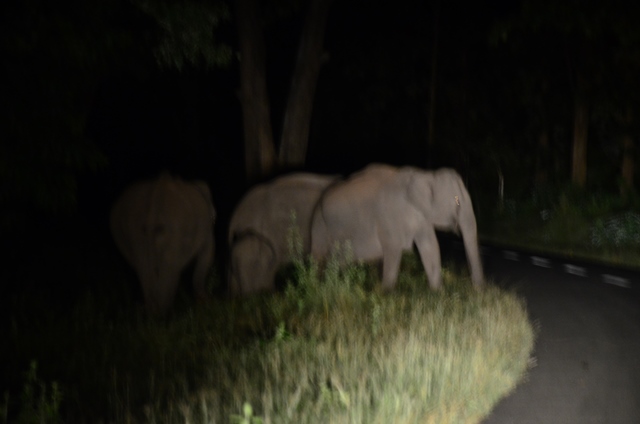
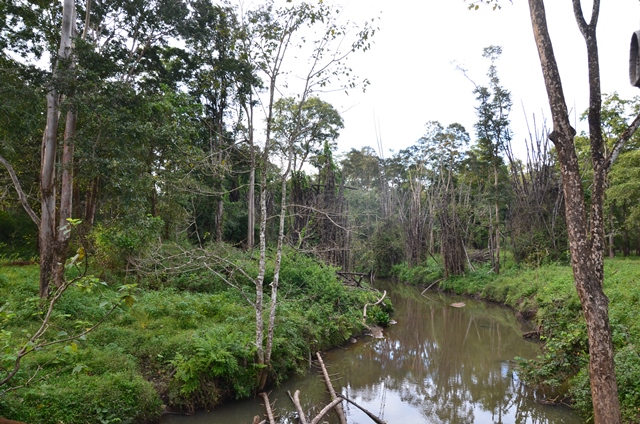
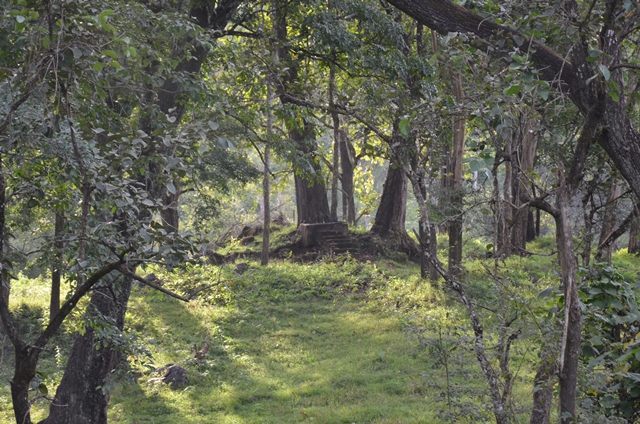
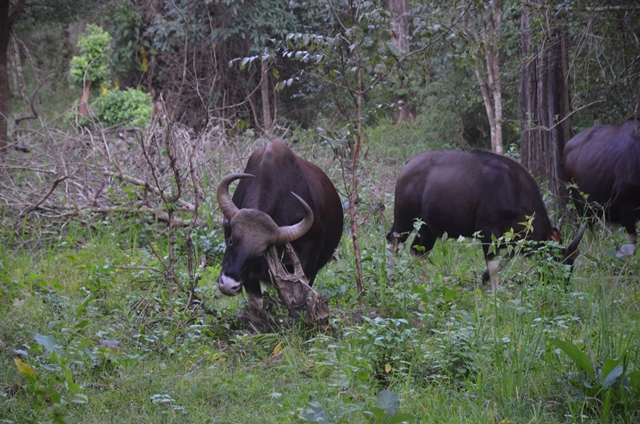
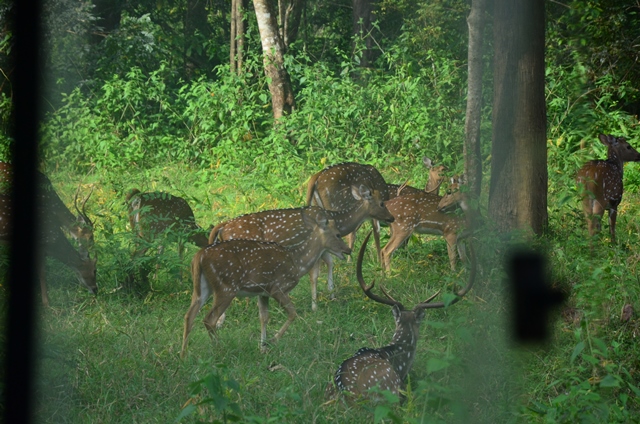
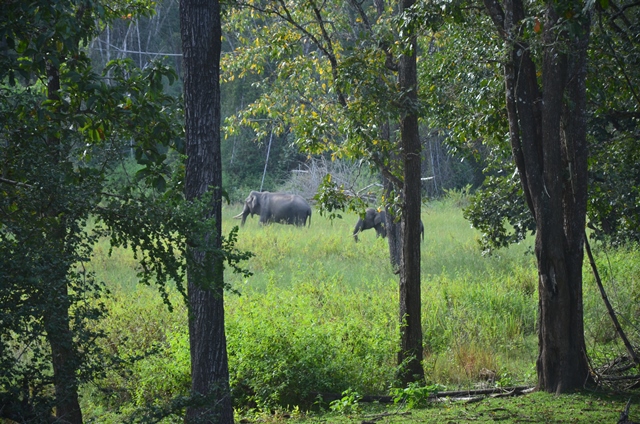


Yet, one doesn’t need not go to the designated wildlife sanctuaries to see animals. Once the sun sets, the state highways and other roads connecting Mananthavady to places such as Thirunelli and other border villages of Kutta and Begur turn to freeways for elephants, Indian gaurs, leopards and even tigers.

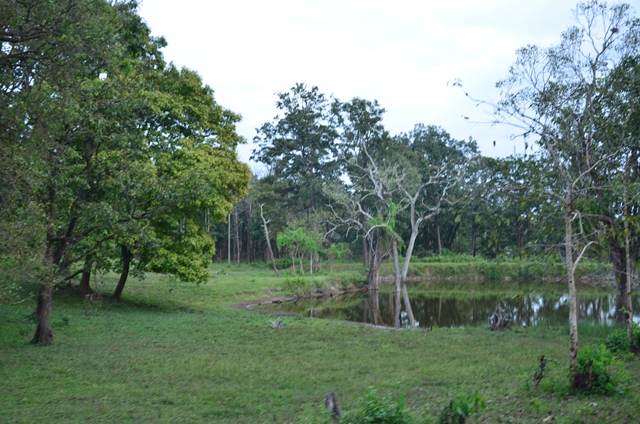



We had a few memorable encounters during our drives during the night.
Apart from elephants, these forest ranges are also home to Indian gaurs, boars, wild dogs, bears, sambhars, spotted deers, monkeys, and Malabar giant squirrels, to name a few.
If wildlife is an agenda in your travel, then North Wayanad is a must.
Mananthavady is the main town in North Wayanad. State buses ply between Mananthavady and villages/towns across the border. Nagerhole National Park and Brahmagiri WLS is part of Karnataka.

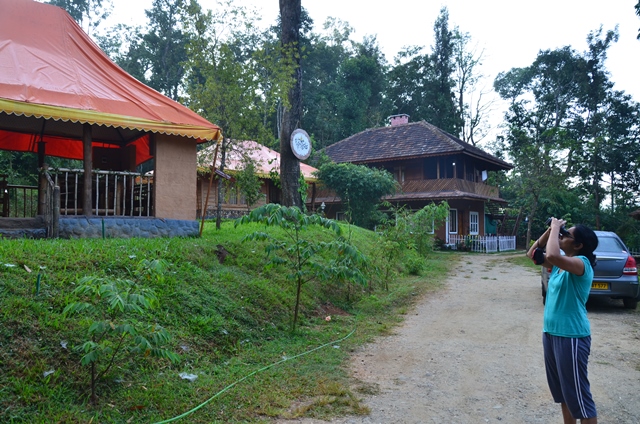
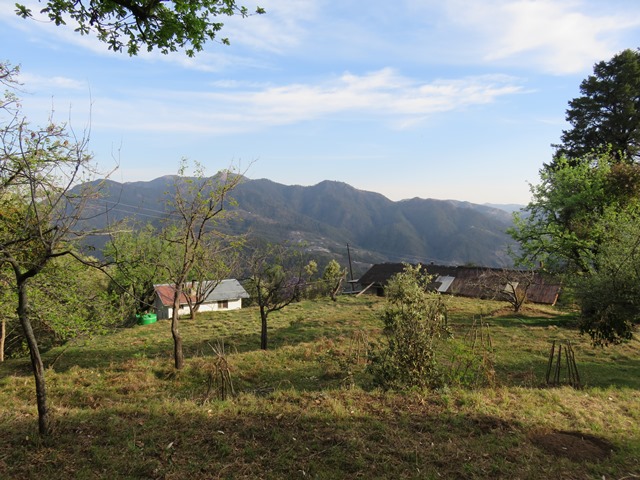

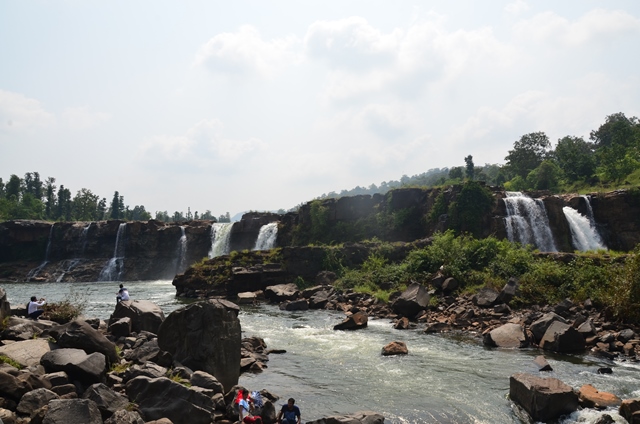
Hi Sandeep just toying with the idea .. \after ur Coimbatore camp in Dec we can join you and go to waynad!!
Nice to read about Waynad. I intend to visit it sometime, soon.
🙂
Thanks, John. Enjoy Wayanad! 🙂
Excellent blog. Wayanad is truly magical with lots of unexplored potential.
Looking forward to see more blogs covering Kerala.
Keep it up
Thanks Robin
lovely sightings! we saw elephants too, but not as many, and again, only on the road while travelling. on the jungle safari we did see one elephant, though the highlight were the birds and a giant squirrel. but its a beautiful place indeed..
Kerala has the greenery and nature that simply mesmerizes us! Only knew of Wayanad’s romantic rolling hills, winding roads, and waterfalls. Did not knew about their wilderness! Nice pictures!
Thanks Anu.
Wayanad is a great place for Wildlife. One could spot even tigers on the roads during night.
Lovely wild life sightings. Isn’t that dholes (wild dogs)?
http://rajniranjandas.blogspot.in
@Niranjan,
we really don’t know.